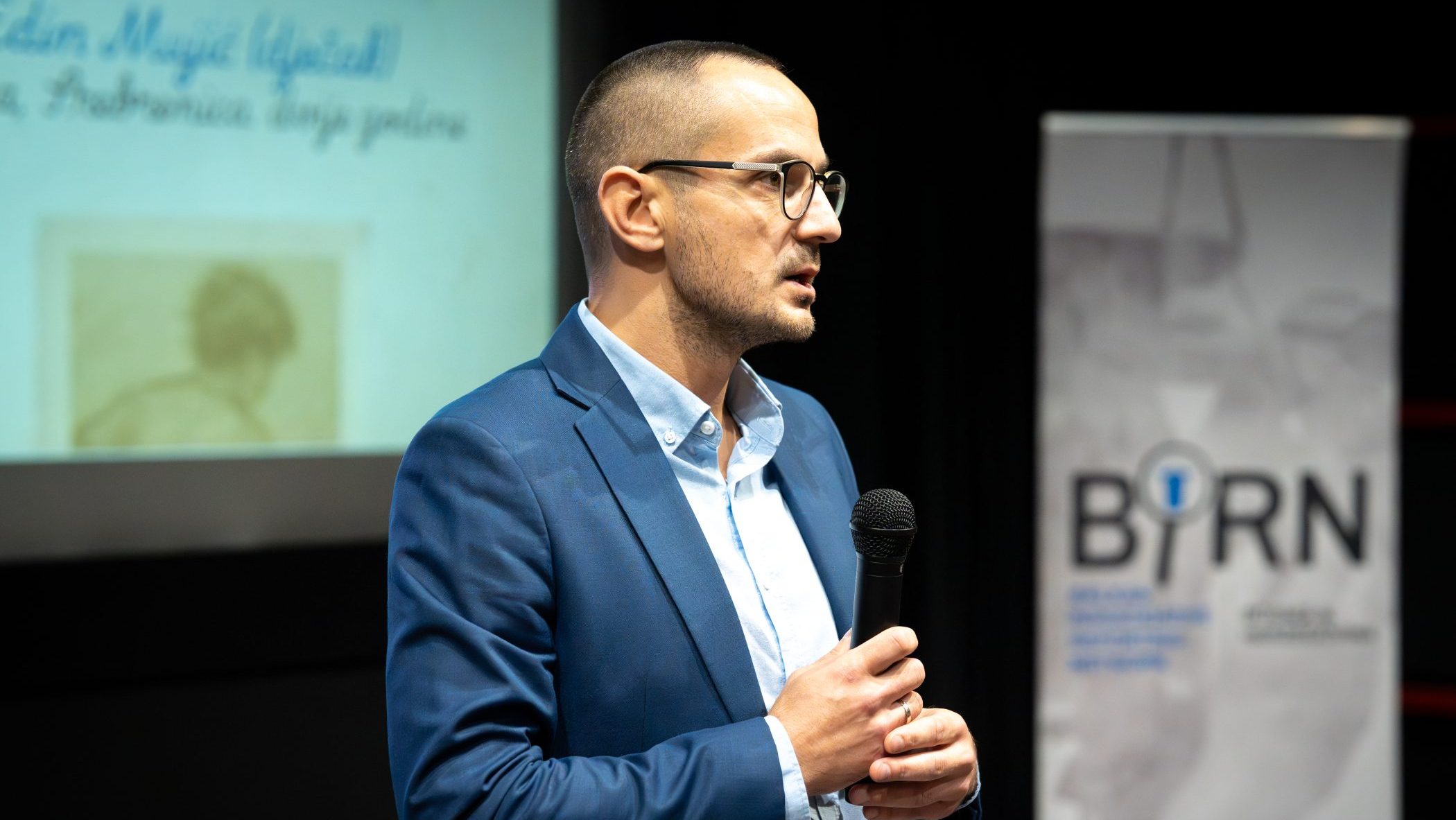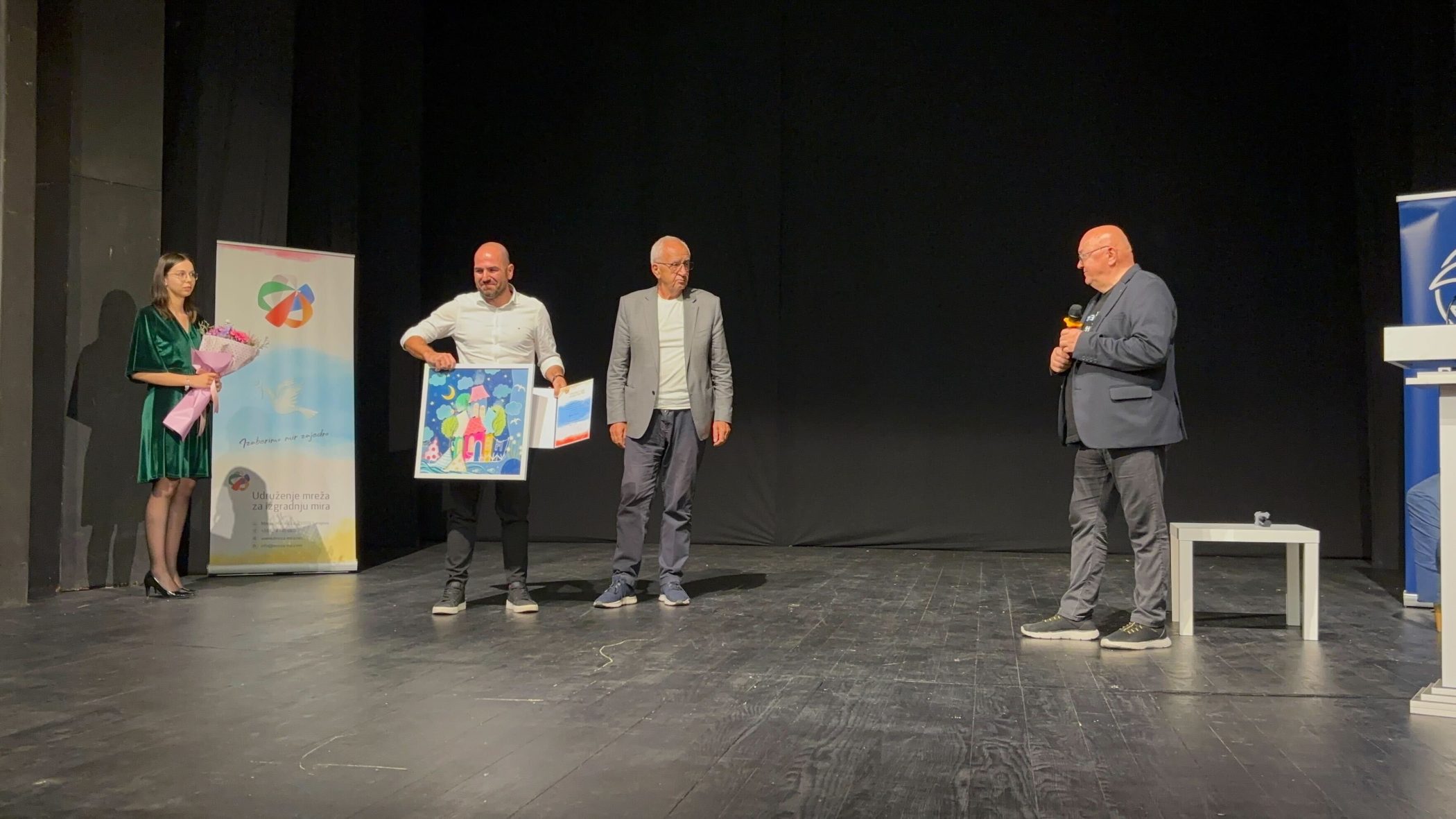Autor:
2. march 2011. | 00:00
This post is also available in: Bosnian
On the second day of his testimony at the trial of Radovan Karadzic, a former secretary of the Svrake Local Community, Vogosca municipality, says that “the Serb authorities” deported more than a thousand Bosniaks from that village in 1992.
Hague Prosecution witness Eset Muracevic, who began his testimony on March 1, said that according to the 1991 census, 1,036 Bosniaks lived in Svrake village, adding that “an unofficial census conducted by new Serb authorities” two years later determined that no Bosniaks lived in the village.
“A similar thing happened in Tihovici village, where 367 Muslims lived in 1991. However, your census-takers did not find any Muslims in the village in 1993. It was not possible to find them because the Serb army attacked the village in July 1992 and killed more than 30 local residents, forcing the others to leave. Those indicators refer to the parts of the village that were under your control,” Muracevic said in response to indictee Karadzic’s questions.
Radovan Karadzic, former President of Republika Srpska, is charged with genocide, crimes against humanity and violation of the laws and customs of war committed in the period from 1992 to 1995 and participation in the persecution of the non-Serb population in 20 Bosnian municipalities, including Vogosca.
Muracevic recalled having been captured by Serb forces in May 1992, adding that he was detained in Semizovac military barracks and Bunker and Planjina Kuca detention camps in Vogosca for a few months. He said he was taken to other locations to perform forced labour and he was used as a human shield.
“People were subjected to various types of torture when they performed forced labour. When they worked outside the detention camp, they got meals regularly, but those who stayed in the camp were often deprived of food.”I was once taken, together with a group of prisoners, to a hill near Semizovac. The sun was shining. We had to carry some half-burned trees. Soldiers forced us to continue working although we did not have enough food or water,” the witness said.
“A similar thing happened in Tihovici village, where 367 Muslims lived in 1991. However, your census-takers did not find any Muslims in the village in 1993. It was not possible to find them because the Serb army attacked the village in July 1992 and killed more than 30 local residents, forcing the others to leave. Those indicators refer to the parts of the village that were under your control,” Muracevic said in response to indictee Karadzic’s questions.
Radovan Karadzic, former President of Republika Srpska, is charged with genocide, crimes against humanity and violation of the laws and customs of war committed in the period from 1992 to 1995 and participation in the persecution of the non-Serb population in 20 Bosnian municipalities, including Vogosca.
Muracevic recalled having been captured by Serb forces in May 1992, adding that he was detained in Semizovac military barracks and Bunker and Planjina Kuca detention camps in Vogosca for a few months. He said he was taken to other locations to perform forced labour and he was used as a human shield.
“People were subjected to various types of torture when they performed forced labour. When they worked outside the detention camp, they got meals regularly, but those who stayed in the camp were often deprived of food.”I was once taken, together with a group of prisoners, to a hill near Semizovac. The sun was shining. We had to carry some half-burned trees. Soldiers forced us to continue working although we did not have enough food or water,” the witness said.
Under the indictment, Karadzic is charged with the unlawful detention of the non-Serb population from the Vogosca area in Bunker and Planjina Kuca detention camps in 1992, the use of prisoners as “human shields” and forcing detainees to perform forced labour, such as digging trenches on front lines.
Muracevic said that the local Serb population in Vogosca “cooperated with the Yugoslav People’s Army, JNA,” in 1992 and “had access to its resources”.
“The local Serbs had the support of the JNA based in Semizovac military barracks. The military barracks were gradually transferred to the Serb authorities starting in 1991. The barracks served as a base for the distribution of arms and the training of local Serbs on how to use weapons. When barricades were set up, JNA offered their armored vehicles as logistic support,” Muracevic said.
The indictment alleges that Karadzic participated in a joint criminal enterprise with the aim of permanently removing Bosnian Muslims and Croats from the territories claimed by Serbs. He allegedly did this in collaboration with members of the JNA and the Bosnian Serb official bodies at the republic, municipal and local levels, among others.
The trial of Karadzic is due to continue on Thursday, March 3.
D.Dz.

